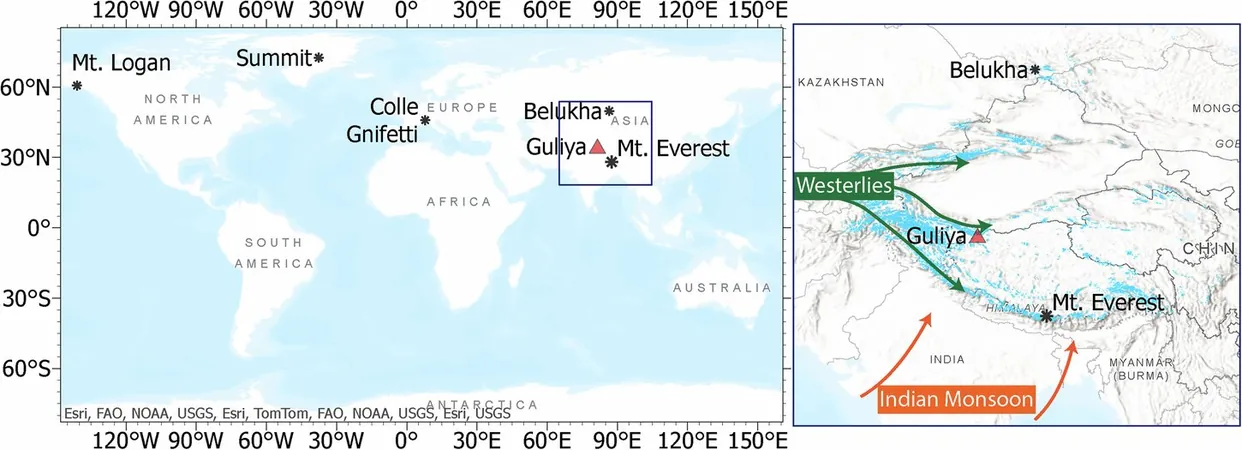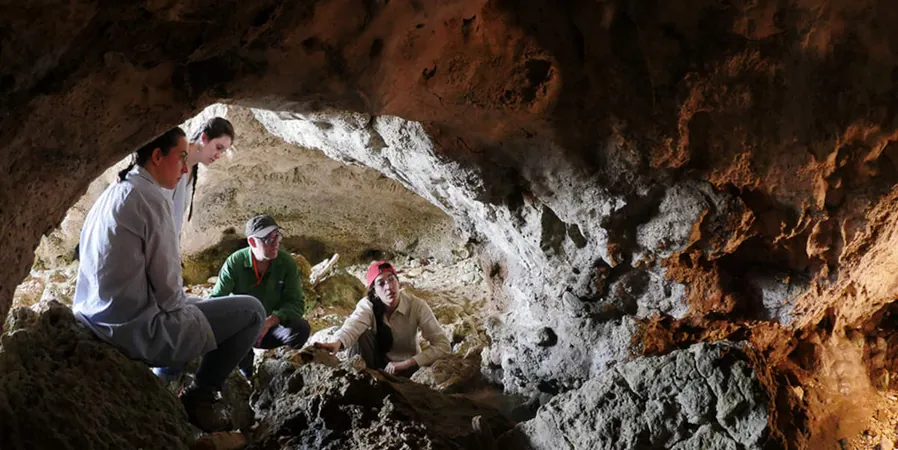
Shocking Discovery: Geologist Unveils Lead Pollution Crisis in Tibetan Glacier Linked to Human Activity
2024-10-10
Author: Arjun
Introduction
A groundbreaking study led by Texas A&M University geologist Dr. Franco Marcantonio has unveiled alarming evidence of lead contamination in a Tibetan glacier, pinpointing human activities as the source of this pollution infiltrating even the most isolated areas of our planet.
Study Findings
The team’s remarkable findings, published in the article titled “Source of lead in a Tibetan glacier since the Stone Age” in the journal Communications Earth & Environment, reveal that the pristine Tibetan Plateau—a vast expanse often referred to as the 'Roof of the World' for its towering altitudes and sprawling landscape—has been negatively impacted by human actions.
Lead Pollution Analysis
The research focused on the Guliya Ice Cap located within this expansive region, where the researchers found that lead pollution intensified significantly starting in 1974, peaking between 2000 and 2007. This staggering revelation raises questions about the far-reaching consequences of industrialization.
Methodology
Employing sophisticated analysis of lead isotope ratios at Texas A&M's Williams Radiogenic Isotope Facility, Dr. Marcantonio and his team traced the contamination back to leaded gasoline emissions from China, which continued until the country’s phasedown of lead in 2007.
Environmental Implications
The presence of lead—a known neurotoxin—amongst the remote Tibetan landscape starkly illustrates the profound extent of human impact on the environment.” Marcantonio stated. The study involved meticulous examination of ice core samples that date back as far as 36,000 years, effectively creating a historical timeline of lead pollution.
Future Research Directions
As the investigation moves forward, Marcantonio plans to explore how lead and various other pollutants traverse different ecosystems—including oceans and even human biology. “We are only beginning to unravel the complexities of how lead and other toxic substances disperse in our environment,” he noted. “By tracking these movements, we aim to uncover the broader implications of pollution and ultimately foster solutions to mitigate contamination and safeguard human health.”
Conclusion
This alarming discovery serves as a poignant reminder of our global responsibility to address pollution and protect even the most remote corners of our planet from the dire consequences of our actions. As researchers delve deeper into this crisis, the call for immediate action becomes more urgent than ever.

 Brasil (PT)
Brasil (PT)
 Canada (EN)
Canada (EN)
 Chile (ES)
Chile (ES)
 España (ES)
España (ES)
 France (FR)
France (FR)
 Hong Kong (EN)
Hong Kong (EN)
 Italia (IT)
Italia (IT)
 日本 (JA)
日本 (JA)
 Magyarország (HU)
Magyarország (HU)
 Norge (NO)
Norge (NO)
 Polska (PL)
Polska (PL)
 Schweiz (DE)
Schweiz (DE)
 Singapore (EN)
Singapore (EN)
 Sverige (SV)
Sverige (SV)
 Suomi (FI)
Suomi (FI)
 Türkiye (TR)
Türkiye (TR)